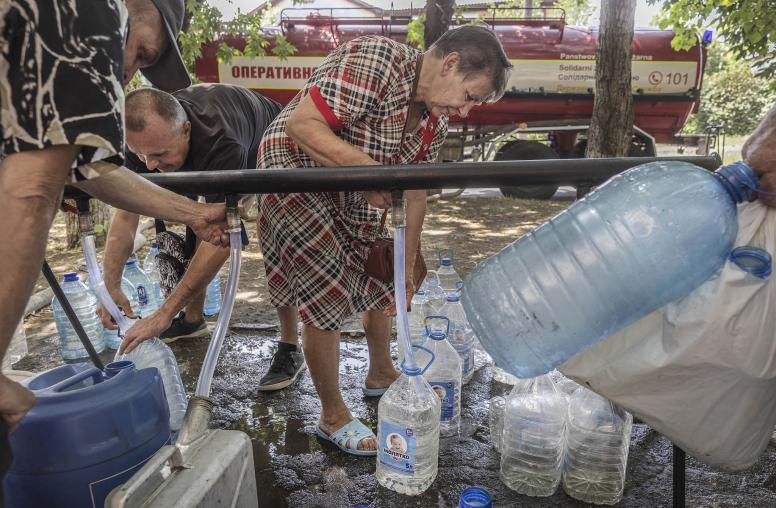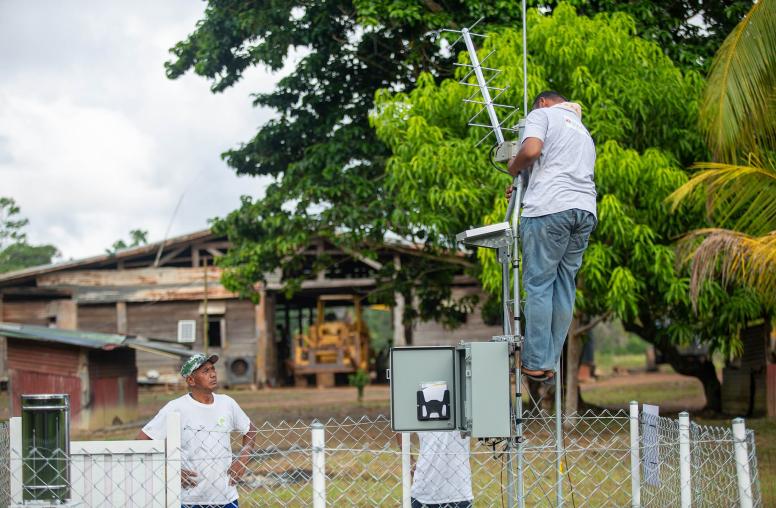Conflict-Sensitive Approach to Infrastructure Development
What is the nexus between conflict analysis and building infrastructure? What roles can new and upgraded buildings, highways, and the like play in winning the "battle for hearts and minds?" How can the U.S. government streamline processes aimed to facilitate infrastructure development in conflict zones?

Summary
- Infrastructure development is the foundation of a sustainable economy and a means to achieving broader nation-building goals. Providing basic services is critical to security, governance, economic development, and social well-being.
- U.S. military forces have improved planning and coordination mechanisms and have created doctrine, planning processes, and training exercises that are shared by all branches of the military. This type and level of coordination mechanism is necessary for civilian and military coordination, as well, and progress is starting to be made in this important area.
- The complexity of the Federal Acquisition Regulations (FAR) often results in missed opportunities to act quickly in restoring essential services. Contracting officers are often reluctant to take chances in expediting infrastructure contracts due to concerns about violating the FAR. Simplified contracting, use of smaller projects, and reachback support are three ways to ensure fleeting opportunities are not lost.
- In conflict-sensitive environments, the condition of infrastructure is often a barometer of whether a society will slip further into violence or make a peaceful transition out of the conflict cycle. The rapid restoration of essential services, such as water, sanitation, and electricity, assists in the perception of a return to normalcy and contributes to the peace process.
- According to James I. Wasserstrom, head of the Office for Oversight of Publicly-Owned Enterprises (utilities) in the United Nations Mission in Kosovo, infrastructure adds “arms and legs” to strategies aimed at winning "hearts and minds." Infrastructure is fundamental to moving popular support away from prewar or during-conflict loyalties and to moving spoilers in favor of postwar political objectives.
- This U.S. Institute of Peace Special Report presents a model that links the infrastructure cycle with conflict analysis. This model is helpful to focus the attention of the infrastructure program planners and implementers on the conflict cycle. In many instances, infrastructure experts approach problems from an engineering perspective. While this view is important, it must be married with an appreciation of the conflict dynamic. Indeed, traditional engineering concerns, such as efficiency, are secondary in a conflict-sensitive approach.
About the Report
This report is based on a series of consultations chaired by Merriam Mashatt, Major General Daniel Long, and James Crum under the auspices of the U.S. Institute of Peace Center of Innovation for Economies and Conflict. The Institute’s Framework for Success (PDF - 856KB) provided the organizational structure for the consultations. At the time the report was developed, Merriam Mashatt directed the Center under the leadership of Daniel Serwer, vice president for the Center for Post-Conflict Peace and Stability Operations. Co-authors Major General Daniel Long and James Crum served as directors of the Department of the Army’s Project and Contracting Office in Iraq and Washington, D.C., respectively. Currently, Merriam Mashatt is the director of Reconstruction and Stabilization for the International Trade Administration, U.S. Department of Commerce; Major General Long is now the commander of the Joint Task Force Civil Support, U.S. Northern Command; and James Crum is a vice president at Van Scoyoc Associates, Inc. The authors thank James Wasserstrom and Colonel Michael Moon for their expert advice and Zoë Cooprider for her research support.



